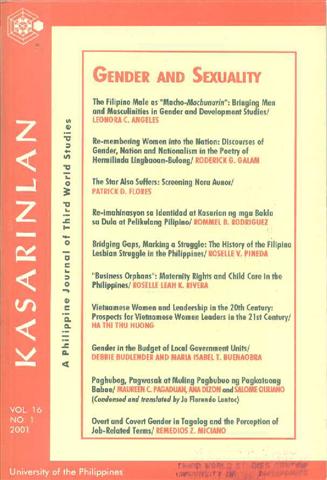Overt and Covert Gender in Tagalog and the Perception of Job-Related Terms
Abstract
Gender is the attribution of femininity and masculinity, which is often, but not entirely, based on sex. In the Tagalog language, gender is indicated by the addition, of lalake or babae as modifier, as in anak na babae (daughter). However, borrowings from Spanish mark gender: a female noun is often marked with an 'a' ending and a male noun with an '0' ending. For instance, linden! for female vendor and tindero for male vendor. This seems to imply that Tagalog has both the overt and covert gender systems. While work does not have sex, culturally it has been gendered, meaning some jobs are perceived to be for women and some for men. One hypothesis suggests that language structure influences this. In this study, the author examines overt and covert gender as they apply to some occupation-related terms in selected Tagalog-speaking provinces.According to her findings, dominantly male or leaning towards a male association were terms related to strength and heavy work (for example karpintero carpenter), and vices such as yosi and uminom (smoking and drinking). The results also validate the myth of women being theweaker sex, suited for decorative or peripheral functions, for example sekretarya (secretary) and traits associated with nurturance (maasikaso). These suggest that in the Tagalog language, perception Iof reality is a stronger factor than word structure in the gender perception of a noun and that some adjectives have been gendered despite the absence of gender marking.
Published
2008-09-18
Section
Research Reports
Keywords
Language; Tagalog; Linguistic
By submitting a manuscript, the authors agree that the exclusive rights to reproduce and distribute the article have been given to the Third World Studies Center.



